
- Home
- Travel Packages
- Top Destination
-
Travel Attraction
By Category
Top Attraction

- Travel Agents
- Car Rentals
- Hotels

About The Ayyappa Temple - Bokaro The Ayyappa Temple in Bokaro is a sacred place of worship dedicated to Lord Ayyappa, a Hindu deity popular in South India. The temple is known for its serene ambiance and beautiful architecture, making it a popular destination for devotees and tourists alike. Situated in the heart of Bokaro, Jharkhand, the temple attracts pilgrims from all over the region who come to seek blessings and pay their respects to Lord Ayyappa. Architecture of Ayyappa Temple - Bokaro The Ayyappa Temple in Bokaro boasts of impressive architecture that reflects traditional South Indian temple design. The temple features a colorful facade with intricate carvings and detailed sculptures depicting various stories and mythological scenes. The main sanctum sanctorum houses the idol of Lord Ayyappa, adorned with flowers and offerings by devotees. The temple also has other shrines dedicated to different deities, along with a spacious hall for prayer and meditation. History The Ayyappa Temple in Bokaro has a rich history dating back several decades. It was established by a group of devoted worshippers who wanted to create a place of worship dedicated to Lord Ayyappa in the region. Over the years, the temple has undergone renovations and expansions to accommodate the growing number of devotees visiting the site. Today, it stands as a symbol of faith and devotion, attracting people from all walks of life. Best Time To Visit The best time to visit the Ayyappa Temple in Bokaro is during the festive season, especially during the annual Ayyappa Mandala Puja and Makaravilakku festival. These celebrations bring a sense of vibrancy and energy to the temple, with special rituals and cultural performances taking place. However, the temple is open throughout the year for devotees to visit and seek blessings from the deity. How To Reach The Ayyappa Temple in Bokaro is easily accessible by road, located in the heart of the city. Visitors can reach the temple via private or public transportation, with ample parking facilities available nearby. Bokaro is well-connected by bus and train services, making it convenient for devotees coming from different parts of the region. The nearest airport is in Ranchi, approximately 120 kilometers away from Bokaro. Significance Of The Ayyappa Temple - Bokaro The Ayyappa Temple in Bokaro holds great significance for devotees who worship Lord Ayyappa. It is believed that praying at the temple can bring blessings of health, prosperity, and happiness to those who seek divine intervention. The temple also serves as a cultural hub, hosting various religious and spiritual events throughout the year. Many devotees visit the temple to offer prayers and participate in rituals that are believed to bring peace and fulfillment in their lives. In conclusion, the Ayyappa Temple in Bokaro is a place of faith, devotion, and spirituality that welcomes people from all walks of life. Whether seeking solace, blessings, or simply a moment of peace, visitors to the temple are sure to feel a sense of tranquility and divinity in the presence of Lord Ayyappa.
Explore More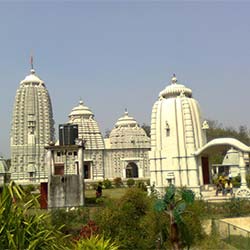
The Jagannath Temple Bokaro, located in the city of Bokaro in Jharkhand, is a popular religious site dedicated to Lord Jagannath, an incarnation of Lord Vishnu. The temple is known for its beautiful architecture, rich history, and spiritual significance among devotees. About The Jagannath Temple Bokaro The Jagannath Temple Bokaro is a prominent Hindu temple that attracts devotees from all over the country. The temple complex is spread over a vast area and is adorned with intricate carvings and colorful paintings depicting various episodes from Hindu mythology. The main deity of the temple is Lord Jagannath, along with his siblings Lord Balabhadra and Devi Subhadra. Architecture of Jagannath Temple Bokaro The architecture of the Jagannath Temple Bokaro is a blend of Kalinga and Dravidian styles. The temple features a towering shikara, a spire-like structure, and a large mandapa, or hall, where devotees gather for prayers and worship. The walls of the temple are decorated with sculptures of various gods and goddesses, adding to its grandeur and beauty. The temple complex also includes smaller shrines dedicated to other deities such as Lord Shiva, Goddess Durga, and Lord Ganesha. History The Jagannath Temple Bokaro has a rich history that dates back several centuries. It is believed that the temple was built by a group of devotees who were inspired by a divine vision of Lord Jagannath. Over the years, the temple has been renovated and expanded to its current form, attracting pilgrims and tourists alike. The temple also has a cultural significance as it hosts various festivals and religious events throughout the year. Best Time To Visit The best time to visit the Jagannath Temple Bokaro is during the festival of Rath Yatra, which is a grand procession where the deities are taken out in chariots for a ceremonial tour. This festival usually falls in the months of June or July and is celebrated with great enthusiasm by devotees. Apart from Rath Yatra, other festivals such as Janmashtami, Diwali, and Navratri are also celebrated at the temple, attracting a large number of visitors. How To Reach The Jagannath Temple Bokaro is easily accessible by road, rail, and air. The nearest railway station is Bokaro Steel City, which is well-connected to major cities like Delhi, Kolkata, and Ranchi. The temple is also located in close proximity to the Bokaro Airport, which has regular flights to cities like Kolkata and Patna. Visitors can also reach the temple by bus or taxi from the nearby towns and cities. Significance Of The Jagannath Temple Bokaro The Jagannath Temple Bokaro holds a special place in the hearts of devotees who come here seeking blessings and spiritual solace. The temple is believed to be a place of healing and rejuvenation, where prayers are answered and wishes fulfilled. Many people visit the temple to seek divine intervention in their personal and professional lives. The peaceful and serene ambiance of the temple makes it an ideal place for meditation and introspection. Overall, the Jagannath Temple Bokaro is not just a religious site but a cultural landmark that celebrates the rich heritage and tradition of India.
Explore More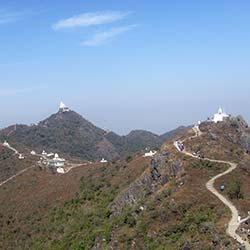
About Parasnath Hills – Bokaro Parasnath Hills in Bokaro, Jharkhand, are a sacred place for the Jain community and a popular pilgrimage site. The hills are named after Parshvanatha, the 23rd Tirthankara of Jainism, who is believed to have attained enlightenment here. The site is known for its natural beauty, tranquil atmosphere, and spiritual significance. History, Architecture, and Design Parasnath Hills have a rich history dating back to ancient times. The temples and shrines on the hills are renowned for their intricate architecture and design, reflecting the Jain beliefs and traditions. The place is a perfect blend of natural beauty and human craftsmanship. Best Time to Visit 1. The best time to visit Parasnath Hills is during the winter months from November to February when the weather is pleasant. 2. Avoid visiting during the monsoon season as the hills can get slippery and dangerous. 3. Early mornings and late evenings are ideal for a peaceful visit to witness the sunrise or sunset. Cultural Significance Parasnath Hills hold immense cultural significance for the Jain community as a sacred pilgrimage site associated with the Tirthankara Parshvanatha. The place is a symbol of spiritual enlightenment and inner peace for devotees. Pilgrimage Practices Devotees often undertake a pilgrimage to Parasnath Hills to seek blessings, meditate, and perform rituals. The climb to the hilltop is considered an act of devotion and penance, with many pilgrims chanting prayers along the way. Dress Code and Etiquette Visitors are expected to dress modestly and respectfully while visiting Parasnath Hills. Wearing traditional attire or white clothing is encouraged as a mark of reverence. Maintaining silence and cleanliness is essential to uphold the sanctity of the place. Activities and Experiences 1. Trekking: Embark on a trek to the hilltop for a rewarding experience and panoramic views of the surrounding landscape. 2. Meditation: Find inner peace and tranquility by meditating at the temples and shrines on the hills. 3. Photography: Capture the scenic beauty and spiritual essence of Parasnath Hills through photography. 4. Cultural Programs: Attend religious ceremonies and cultural events organized at the site. Art and Religious Symbols The temples and shrines on Parasnath Hills are adorned with intricate carvings, sculptures, and religious symbols that reflect the Jain faith and mythology. The artistry and symbolism of these structures are a testament to the devotion and craftsmanship of the Jain community. Local Insights 1. Local Cuisine: Enjoy traditional Jain cuisine and local delicacies at nearby eateries. 2. Shopping: Purchase souvenirs, religious items, and handicrafts from local shops. 3. Festivals: Participate in Jain festivals and celebrations to experience the vibrant culture of the community. Overall, Parasnath Hills in Bokaro offer a unique blend of natural beauty, spirituality, and cultural heritage, making it a must-visit destination for pilgrims, tourists, and nature enthusiasts alike.
Explore More
About Shikharji Dham, Bokaro Shikharji Dham, located in Bokaro, is a sacred pilgrimage site for Jains. It is believed to be the place where Lord Mahavira, the 24th Tirthankara of Jainism, attained Nirvana. The site is surrounded by lush greenery and offers a serene and spiritual atmosphere for visitors. History, Architecture, and Design Shikharji Dham has a rich history dating back to ancient times. The architecture of the temples and shrines reflects traditional Jain design principles, with intricate carvings and sculptures depicting Jain deities and symbols. The design of the site is meant to evoke a sense of peace and tranquility, perfect for meditation and reflection. Best Time to Visit 1. The best time to visit Shikharji Dham is during the winter months, from October to March, when the weather is pleasant and cool. 2. Avoid visiting during the monsoon season, from June to September, as heavy rains can make the trek to the site difficult and dangerous. Cultural Significance Shikharji Dham holds immense cultural significance for Jains, as it is considered one of the holiest pilgrimage sites in Jainism. Many devotees visit the site to pay their respects to Lord Mahavira and seek spiritual enlightenment. Pilgrimage Practices Devotees visiting Shikharji Dham often engage in various spiritual practices such as reciting prayers, meditation, and performing rituals at the temples and shrines. Many pilgrims also undertake the arduous trek to the summit of the hill, known as Parasnath Hill, as a form of penance and devotion. Dress Code and Etiquette Visitors are expected to dress modestly and respectfully when visiting Shikharji Dham, covering their shoulders and legs. Shoes are not allowed inside the temples, so it is customary to remove them before entering. Respectful behavior and silence are also encouraged to maintain the solemn atmosphere of the site. Activities and Experiences Visitors to Shikharji Dham can participate in a range of activities such as hiking, meditation, and attending religious ceremonies. The site also offers stunning views of the surrounding landscape, making it an ideal spot for nature lovers and photography enthusiasts. Art and Religious Symbols The temples and shrines at Shikharji Dham are adorned with intricate carvings and sculptures depicting Jain deities and religious symbols. Each artwork carries deep spiritual significance and serves as a reminder of the principles and teachings of Jainism. Local Insights Local guides and residents can provide valuable insights into the history and significance of Shikharji Dham, as well as offer recommendations for nearby attractions and activities. Engaging with the local community can enhance your overall experience and deepen your understanding of the site.
Explore More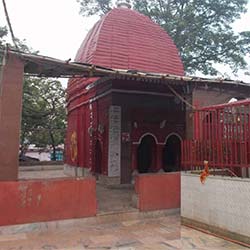
About The Lilori Sthan – Dhanbad Temple The Lilori Sthan – Dhanbad Temple, also known as the Lilori Baba Temple, is a prominent religious site located in the city of Dhanbad in Jharkhand, India. It is dedicated to Lilori Baba, a revered saint who is believed to have possessed supernatural powers. The temple attracts devotees from far and wide who come to seek blessings and fulfill their wishes. Architecture of Lilori Sthan – Dhanbad Temple The architecture of the Lilori Sthan – Dhanbad Temple is simple yet elegant. The main shrine is adorned with intricate carvings and decorations depicting various Hindu deities. The temple complex also houses smaller shrines dedicated to different gods and goddesses. The entire structure exudes a sense of peace and tranquility, making it a perfect place for spiritual contemplation and meditation. History The history of the Lilori Sthan – Dhanbad Temple dates back several centuries. It is said that Lilori Baba, the saint to whom the temple is dedicated, lived in the area and performed numerous miracles during his lifetime. After his passing, devotees built a shrine in his honor, which eventually grew into the grand temple complex that stands today. The temple has since become a symbol of faith and devotion for the local community. Best Time To Visit The best time to visit the Lilori Sthan – Dhanbad Temple is during the winter months, from October to February, when the weather is cool and pleasant. This time of year is ideal for exploring the temple and its surroundings without being affected by the scorching heat of summer. It is also recommended to visit during festival times, such as Navratri or Shivratri, when the temple is adorned with colorful decorations and hosts special ceremonies and rituals. How To Reach The Lilori Sthan – Dhanbad Temple is easily accessible by road, rail, and air. The nearest airport is in Ranchi, approximately 150 kilometers away, from where one can take a taxi or bus to reach Dhanbad. The city is well-connected by rail to major cities like Kolkata, Delhi, and Mumbai. Local buses and auto-rickshaws are available for transportation within Dhanbad, making it convenient for visitors to reach the temple. Significance Of The Lilori Sthan – Dhanbad Temple The Lilori Sthan – Dhanbad Temple holds great significance for the local community as well as devotees who come from afar. It is believed that worshipping at the temple can bring blessings and fulfill desires. Many devotees offer prayers and perform rituals to seek divine intervention in their lives. The temple also serves as a place of solace and spiritual refuge for those seeking peace and enlightenment. Overall, the Lilori Sthan – Dhanbad Temple is a sacred place that continues to inspire faith and devotion in all who visit.
Explore More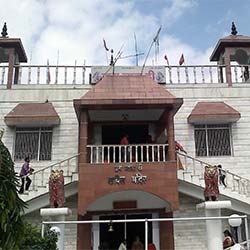
About The Shakti Mandir Temple The Shakti Mandir Temple in Dhanbad is a popular Hindu temple dedicated to Goddess Durga, also known as Shakti. It is located in the heart of the city and attracts devotees from all over the region. The temple is known for its religious significance and architectural beauty, making it a must-visit destination for spiritual seekers and tourists alike. Architecture of Shakti Mandir Temple The Shakti Mandir Temple boasts an impressive architectural style that combines traditional Indian temple design with modern elements. The main entrance is adorned with intricate carvings and sculptures depicting various Hindu deities, while the inner sanctum showcases a large idol of Goddess Durga in all her glory. The temple's spire reaches towards the sky, creating a striking silhouette against the backdrop of the city. History The Shakti Mandir Temple has a rich history that dates back several centuries. It is believed to have been established by a group of devout followers who were inspired by a divine vision of Goddess Durga. Over the years, the temple has undergone several renovations and expansions, each adding to its grandeur and spiritual significance. Today, it stands as a symbol of faith and devotion for the people of Dhanbad. Best Time To Visit The best time to visit the Shakti Mandir Temple is during the festive season of Navratri, which celebrates the triumph of good over evil. During this time, the temple is beautifully decorated with flowers and lights, and devotees gather to offer prayers and seek blessings from the Goddess. The atmosphere is filled with joy and devotion, making it a truly memorable experience for visitors. How To Reach The Shakti Mandir Temple is conveniently located in the heart of Dhanbad and is easily accessible by road. Visitors can take a taxi or auto-rickshaw from the city center to reach the temple. The nearest railway station is Dhanbad Junction, which is well-connected to major cities across the country. For those traveling by air, the nearest airport is in Ranchi, approximately 150 kilometers away. Significance Of The Shakti Mandir Temple The Shakti Mandir Temple holds great significance for the devotees who frequent its premises. It is believed that Goddess Durga resides in the temple and blesses her followers with strength, courage, and wisdom. Many devotees visit the temple to seek her divine intervention in times of trouble or to express gratitude for her protection and guidance. The temple serves as a spiritual retreat for those seeking inner peace and solace in the presence of the divine. In conclusion, the Shakti Mandir Temple in Dhanbad is a place of immense beauty and spiritual significance. Its rich history, stunning architecture, and divine presence make it a must-visit destination for anyone seeking to connect with the divine. Whether you are a devout follower or a curious traveler, a visit to this sacred temple is sure to leave a lasting impression on your heart and soul.
Explore More
About The Jagannath Temple - Ranchi The Jagannath Temple in Ranchi is a famous Hindu temple dedicated to Lord Jagannath, a form of Lord Vishnu. Located in the heart of the city, this temple is a popular pilgrimage destination for devotees from all over the country. The main deity, Lord Jagannath, along with his siblings, Lord Balabhadra and Devi Subhadra, are worshipped here with great reverence. The temple is known for its spiritual ambiance, architectural beauty, and religious significance. Architecture of Jagannath Temple - Ranchi The Jagannath Temple in Ranchi is a fine example of Kalinga architecture. The temple complex consists of the main shrine dedicated to Lord Jagannath, along with separate shrines for Lord Balabhadra and Devi Subhadra. The temple is adorned with intricate carvings, beautiful sculptures, and colorful paintings depicting various episodes from Hindu mythology. The sanctum sanctorum houses the idols of the deities, which are beautifully adorned with silk garments and precious jewelry during festivals and special occasions. History The history of the Jagannath Temple in Ranchi dates back to several centuries. It is believed that the temple was built by a group of devotees who were inspired by the divine presence of Lord Jagannath in the region. Over the years, the temple has undergone several renovations and expansions to its current grandeur. The temple is not only a place of worship but also a symbol of cultural heritage and religious harmony. Best Time To Visit The best time to visit the Jagannath Temple in Ranchi is during the festivals of Rath Yatra and Janmashtami when the temple is adorned with lights, flowers, and decorations. These festivals attract a large number of devotees who come to seek the blessings of the deities and participate in the festivities. Apart from the festivals, visiting the temple during early mornings or evenings can also be a peaceful and serene experience. How To Reach The Jagannath Temple in Ranchi is located in the heart of the city and is easily accessible by road. The nearest railway station is Ranchi Junction, which is well-connected to major cities across the country. The temple is also well-connected by local buses, taxis, and auto-rickshaws. Visitors can also hire private vehicles or take a guided tour to reach the temple conveniently. Significance Of The Jagannath Temple - Ranchi The Jagannath Temple in Ranchi holds great religious significance for devotees of Lord Jagannath. It is believed that worshipping the deities at this temple fulfills the desires and brings prosperity and well-being to the devotees. The temple also serves as a center for cultural and social gatherings, where people from all walks of life come together to offer prayers and seek blessings. The serene and tranquil ambiance of the temple provides solace and spiritual upliftment to all those who visit. In conclusion, the Jagannath Temple in Ranchi is not just a place of worship but a symbol of faith, heritage, and unity. It attracts devotees and tourists alike with its architectural beauty, religious significance, and spiritual aura. Visiting this sacred place is a soul-stirring experience that leaves a lasting impression on the hearts and minds of all those who seek the blessings of Lord Jagannath.
Explore More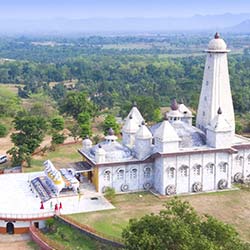
About The Sun Temple - Ranchi The Sun Temple in Ranchi is a significant religious site dedicated to the worship of Lord Sun. It is a magnificent structure that showcases beautiful architecture and intricate designs. The temple is a popular tourist destination in Ranchi, drawing visitors from all over to admire its beauty and serene atmosphere. Architecture of Sun Temple - Ranchi The Sun Temple in Ranchi features a traditional Indian architectural style with influences of ancient Hindu temple designs. The temple is built using red stones and white marbles, giving it a unique and striking appearance. The main structure consists of a towering spire that reaches towards the sky, symbolizing the sun's powerful presence. The temple is adorned with intricate carvings and sculptures depicting various mythological scenes and deities. History The Sun Temple in Ranchi was built in the 1970s by a philanthropist named Raja Baldevdas Birla. The construction of the temple took several years to complete, and it was finally inaugurated in the early 1980s. Since then, the temple has been a revered religious site for worshippers of Lord Sun and a popular tourist destination in Ranchi. Best Time To Visit The best time to visit the Sun Temple in Ranchi is during the winter months, from October to March. The weather during this time is pleasant and comfortable, making it ideal for exploring the temple and its surroundings. However, visitors should be prepared for crowds during peak tourist season, so it is advisable to plan your visit accordingly. How To Reach The Sun Temple in Ranchi is located in the heart of the city, making it easily accessible by various modes of transportation. Visitors can reach the temple by taking a taxi or a bus from the main city center. The nearest railway station is Ranchi Junction, which is well-connected to major cities in India. Additionally, there are several hotels and guesthouses in the vicinity for those planning to stay overnight. Significance Of The Sun Temple - Ranchi The Sun Temple in Ranchi holds immense religious significance for followers of Lord Sun. It is believed that worshipping at the temple can bring blessings of prosperity and good health. Devotees visit the temple to offer prayers and seek blessings for their well-being and success. The serene ambiance of the temple provides a peaceful retreat for meditation and spiritual contemplation, making it a popular destination for both tourists and worshippers alike. Overall, the Sun Temple in Ranchi is a place of beauty, spirituality, and tranquility, making it a must-visit destination for anyone looking to explore the rich cultural heritage of India.
Explore More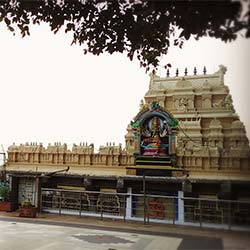
About The Bhadrakali Temple - Hazaribag The Bhadrakali Temple in Hazaribag is one of the most significant and revered temples in Jharkhand, India. Dedicated to Goddess Bhadrakali, this temple holds immense spiritual and cultural importance for the local community as well as devotees from far and wide. The temple is known for its beautiful architecture, serene surroundings, and peaceful ambiance, making it a popular place of worship and pilgrimage. Architecture of Bhadrakali Temple - Hazaribag The Bhadrakali Temple is a fine example of traditional Indian temple architecture. The temple is built in the North Indian Nagara style, characterized by its tall shikhara or spire and intricate carvings on the walls. The main sanctum sanctorum houses the idol of Goddess Bhadrakali, adorned with flowers, garlands, and ornaments. The temple complex also includes smaller shrines dedicated to other deities, as well as a sacred pond where devotees can take a dip and seek blessings. History The history of the Bhadrakali Temple dates back several centuries. According to local legends, the temple was established by a group of devoted Brahmins who were inspired by a divine vision of Goddess Bhadrakali. Over the years, the temple has undergone several renovations and expansions, but its spiritual essence and significance have remained unchanged. The temple continues to attract pilgrims and worshippers who seek the blessings of the powerful Goddess. Best Time To Visit The best time to visit the Bhadrakali Temple in Hazaribag is during the festival of Navratri, which is dedicated to the worship of Goddess Durga in her various forms, including Bhadrakali. The temple comes alive with colorful decorations, religious rituals, and devotional songs during this time, creating a festive and joyous atmosphere. Apart from Navratri, any time of the year is suitable for visiting the temple to experience its spiritual energy and tranquility. How To Reach The Bhadrakali Temple in Hazaribag is easily accessible by road, rail, and air. The nearest railway station is Hazaribag Road, which is well-connected to major cities like Ranchi and Patna. From the railway station, visitors can hire a taxi or auto-rickshaw to reach the temple, which is located a short distance away. Alternatively, buses and private vehicles can also be used to travel to the temple from nearby towns and cities. Significance Of The Bhadrakali Temple - Hazaribag The Bhadrakali Temple holds immense significance for devotees who believe in the protective and benevolent powers of Goddess Bhadrakali. It is said that worshipping at this temple can bring prosperity, peace, and protection from evil forces. Many devotees offer prayers, perform rituals, and make offerings to seek the blessings of the Goddess for their well-being and success. The temple also serves as a cultural and social hub where community events, religious ceremonies, and festivities take place, bringing people together in a spirit of devotion and unity. Overall, the Bhadrakali Temple in Hazaribag is not just a place of worship, but a sacred sanctuary where faith, tradition, and spirituality converge to create a unique and enriching experience for all who visit. Whether seeking divine blessings, inner peace, or simply a moment of reflection, the temple offers a serene and welcoming environment for devotees and visitors alike.
Explore More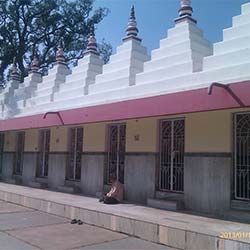
About The Narsimhasthan - Hazaribagh Temple Located in Hazaribagh, Jharkhand, the Narsimhasthan Temple is dedicated to Lord Narasimha, an avatar of Lord Vishnu. This ancient temple holds immense religious significance for the local community and attracts devotees from far and wide. The temple complex is spread over a vast area and includes the main shrine dedicated to Lord Narasimha, along with several smaller shrines dedicated to other deities. The architecture of the temple is a beautiful blend of traditional and modern styles, with intricate carvings and sculptures that reflect the rich cultural heritage of the region. Architecture of Narsimhasthan - Hazaribagh Temple The Narsimhasthan Temple showcases a unique architectural style that is a testament to the skilled craftsmanship of the artisans of the region. The main shrine is adorned with ornate carvings depicting scenes from Hindu mythology, while the surrounding structures feature intricate designs and motifs. The temple complex also includes a large courtyard where devotees can gather for prayers and rituals. The sanctum sanctorum houses the idol of Lord Narasimha, which is revered by devotees for its divine presence. History The history of the Narsimhasthan Temple dates back several centuries, with the exact origins of the temple shrouded in mystery. According to local legends, the temple was established by a devout king who was blessed by Lord Narasimha and built the temple as a token of his gratitude. Over the years, the temple has undergone several renovations and expansions, but its spiritual significance has remained unchanged. The Narsimhasthan Temple continues to be a place of worship and pilgrimage for devotees seeking blessings and divine intervention in their lives. Best Time To Visit The best time to visit the Narsimhasthan Temple is during the winter months, from November to February, when the weather is pleasant and conducive for exploring the temple complex. The annual festivals and celebrations held at the temple during this time attract a large number of devotees and tourists. It is advisable to check the temple's schedule of events before planning your visit to ensure that you can witness the rituals and ceremonies that take place at the temple during the festive season. How To Reach The Narsimhasthan Temple is easily accessible by road, with regular bus services connecting Hazaribagh to major cities in Jharkhand and neighboring states. The nearest railway station is located in Koderma, which is well-connected to Hazaribagh by road. For those traveling by air, the nearest airport is in Ranchi, which is approximately 100 kilometers away from Hazaribagh. From Ranchi, you can hire a taxi or take a bus to reach the Narsimhasthan Temple. Significance Of The Narsimhasthan - Hazaribagh Temple The Narsimhasthan Temple holds great significance for devotees who believe in the divine powers of Lord Narasimha. The temple is believed to be a place where prayers are answered and wishes are fulfilled, making it a popular destination for those seeking spiritual guidance and blessings. Devotees often visit the temple to offer prayers, perform rituals, and seek the blessings of Lord Narasimha for protection, prosperity, and well-being. The serene and peaceful atmosphere of the temple complex provides a spiritual sanctuary for those seeking solace and divine intervention in their lives.
Explore More
About The Baidyanath Temple The Baidyanath Temple, also known as the Baidyanath Dham or Vaidyanath Temple, is one of the most famous and revered Hindu temples in India. Located in Deoghar, in the state of Jharkhand, the temple is dedicated to Lord Shiva, who is worshipped here in the form of Vaidyanath or the "Lord of Physicians." The temple complex is spread over a large area and attracts thousands of devotees every year, especially during the holy month of Shravan. Architecture of Baidyanath Temple The Baidyanath Temple is a prime example of ancient Hindu temple architecture. The main shrine, dedicated to Lord Shiva, is a tall and imposing structure made of stone and marble. The temple is adorned with intricate carvings and sculptures, depicting various scenes from Hindu mythology. The spire of the temple, known as the shikhara, rises high above the complex and is a sight to behold. The inner sanctum of the temple houses the Jyotirlinga, a sacred symbol of Lord Shiva. History The history of the Baidyanath Temple dates back to ancient times. According to legend, the temple is said to have been established by Ravana, the demon king of Lanka, who was a devout worshipper of Lord Shiva. Over the centuries, the temple has been renovated and expanded by various rulers and dynasties, including the Mughals and the Marathas. The present structure of the temple was built during the 18th century by the ruler of Gidhaur, Raja Puran Mal. Best Time To Visit The best time to visit the Baidyanath Temple is during the holy month of Shravan, which usually falls in July or August. During this time, devotees from all over India undertake a pilgrimage to the temple, carrying holy water from the Ganges River to offer to Lord Shiva. The temple is decorated with flowers and lights, and the atmosphere is filled with devotion and spirituality. Apart from Shravan, the temple can be visited throughout the year, but it is advisable to avoid the monsoon season due to heavy rainfall in the region. How To Reach The Baidyanath Temple is located in Deoghar, which is well-connected by road, rail, and air. The nearest airport is in Ranchi, which is around 250 kilometers away from Deoghar. The nearest railway station is in Jasidih, which is just 7 kilometers from the temple. Buses and taxis are also available from various cities in Jharkhand and neighboring states to reach Deoghar. Once in Deoghar, the temple is easily accessible by local transport or on foot. Significance Of The Baidyanath Temple The Baidyanath Temple holds great significance for Hindus, especially devotees of Lord Shiva. It is believed that worshipping at the temple can cure illnesses and grant good health. The Jyotirlinga in the temple is considered one of the twelve sacred Jyotirlingas in India, each representing a different aspect of Lord Shiva. Thousands of pilgrims visit the temple every year to seek the blessings of Lord Shiva and fulfill their prayers and wishes. The temple is not just a religious site but also a place of peace, tranquility, and spiritual enlightenment. In conclusion, the Baidyanath Temple in Deoghar is a place of immense religious and historical importance. Its magnificent architecture, rich history, and spiritual significance make it a must-visit destination for any devotee of Lord Shiva or anyone interested in exploring the cultural heritage of India. A visit to the temple is sure to leave a lasting impression and evoke a sense of awe and reverence towards the divine.
Explore More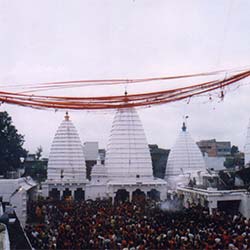
About The Baiju Temple The Baiju Temple, located in Deoghar, is a popular religious site in the state of Jharkhand, India. This temple holds significance for both devotees and tourists due to its historical importance and stunning architecture. The temple is dedicated to Lord Shiva, one of the principal deities in Hinduism, and attracts a large number of pilgrims throughout the year. Architecture of Baiju Temple The Baiju Temple is known for its exquisite architecture, which reflects a blend of traditional and modern styles. The temple complex comprises a main shrine dedicated to Lord Shiva, surrounded by smaller shrines dedicated to various other Hindu gods and goddesses. The entrance of the temple is adorned with intricate carvings and sculptures depicting mythological scenes from Hindu scriptures. The main sanctum sanctorum of the temple houses a large lingam, the symbol of Lord Shiva. The lingam is a sacred representation of the deity and is worshipped by devotees with offerings of water, milk, and flowers. The temple also features a spacious courtyard where devotees gather for prayers and religious ceremonies. History The history of Baiju Temple dates back to ancient times, with references to the temple found in various historical texts and scriptures. According to legend, the temple was built by a devout devotee named Baiju, who dedicated the shrine to Lord Shiva as a token of his faith and devotion. Over the years, the temple has undergone several renovations and expansions, resulting in the magnificent structure that stands today. The temple has played a significant role in the religious and cultural heritage of Deoghar, drawing pilgrims and tourists from across the country. Best Time To Visit The best time to visit the Baiju Temple is during the festival of Maha Shivaratri, which is celebrated with great fervor and enthusiasm by devotees. This festival falls in the month of February or March and attracts a large number of pilgrims to the temple. Apart from Maha Shivaratri, other auspicious occasions such as Shravan month and Kartik Purnima are also ideal times to visit the temple. How To Reach The Baiju Temple is easily accessible by road, rail, and air. The nearest airport to Deoghar is in Ranchi, which is well-connected to major cities in India. From the airport, tourists can hire a taxi or take a bus to reach Deoghar. The nearest railway station to Deoghar is Baidyanath Dham Junction, which is well-connected to cities like Kolkata, Patna, and Ranchi. From the railway station, tourists can take a taxi or an auto-rickshaw to reach the Baiju Temple. For those traveling by road, Deoghar is well-connected to major cities in Jharkhand and Bihar. State-run buses and private taxis are available for transport to the Baiju Temple. Significance Of The Baiju Temple The Baiju Temple holds great significance for devotees of Lord Shiva, who come to seek blessings and offer prayers at the sacred shrine. The temple is believed to be a source of spiritual energy and divine grace, which is said to fulfill the wishes of devotees who visit with a pure heart and sincere devotion. Apart from its religious significance, the Baiju Temple is also a popular tourist destination, attracting visitors with its stunning architecture, peaceful ambiance, and serene surroundings. The temple offers a tranquil retreat for those seeking solace and divine intervention in their lives. In conclusion, the Baiju Temple in Deoghar is not only a place of worship but also a symbol of faith, devotion, and cultural heritage. Its rich history, beautiful architecture, and spiritual significance make it a must-visit destination for anyone seeking a spiritual experience in the heart of India.
Explore More2 Day Ranchi - Jharkhand Tour
2 Days/ 1 Night
Varanasi - Bodhgaya - Ranchi
3 Day - 2 Night Ranchi Package
3 Days/ 2 Night
Ranchi - Latehar
Spiritual Bliss In Deoghar – Sawan Special 2 Nights and 3 Days
3 Days/ 2 Night
Deoghar
Festive Fusion: Durga Puja in Dhanbad & Ranchi - 2 Nights and 3 Days
3 Days/ 2 Night
Dhanbad - Ranchi
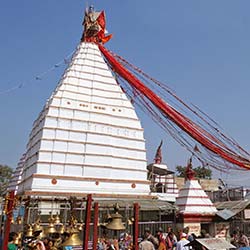
About The Basukinath Temple The Basukinath Temple is a revered Hindu pilgrimage site located in the Deoghar district of Jharkhand. It is dedicated to Lord Shiva and is one of the most visited temples in the region. The temple holds immense religious significance for Hindu devotees and attracts thousands of pilgrims every year. Architecture of Basukinath Temple The Basukinath Temple is built in traditional Hindu architectural style with intricate carvings and designs. The main shrine of the temple houses the sacred Shivlinga, which is the focal point of worship for devotees. The temple complex also includes several smaller shrines dedicated to various deities, as well as a picturesque pond where devotees can take a holy dip. History The Basukinath Temple has a rich historical background dating back centuries. It is believed that the temple was originally built by Raja Basu, a devout follower of Lord Shiva. Over the years, the temple has undergone several renovations and expansions, but its sanctity and spiritual aura have remained unchanged. Best Time To Visit The best time to visit the Basukinath Temple is during the auspicious month of Shravan, which usually falls between July and August. During this time, devotees from all over the country flock to the temple to offer prayers and seek blessings from Lord Shiva. However, the temple is open to visitors throughout the year, so you can plan your visit according to your convenience. How To Reach The Basukinath Temple is well-connected by road and can be easily reached from major cities in Jharkhand and neighboring states. The nearest railway station is located in Deoghar, which is about 43 kilometers away from the temple. You can also hire a taxi or take a bus from Deoghar to reach the temple. The nearest airport is in Ranchi, which is about 265 kilometers away from the temple. Significance Of The Basukinath Temple The Basukinath Temple holds immense religious significance for Hindu devotees, especially those who worship Lord Shiva. It is believed that a visit to the temple and offering prayers to the Shivlinga can bring peace, prosperity, and fulfillment of one's wishes. The temple is also believed to be a sacred place where devotees can seek blessings for good health and well-being. In conclusion, the Basukinath Temple is a sacred pilgrimage site that holds deep spiritual significance for Hindu devotees. With its beautiful architecture, rich history, and peaceful surroundings, it is a must-visit destination for anyone seeking solace and inner peace.
Explore More
About The Naulakha Mandir Temple The Naulakha Mandir Temple, located in Deoghar, Jharkhand, is a Hindu temple dedicated to Lord Shiva. The temple is known for its stunning architecture, spiritual significance, and historical importance. It is one of the most revered temples in the region and attracts thousands of devotees and tourists every year. The name "Naulakha" means "worth nine lakh" in Hindi, and legend has it that the temple cost nine lakh rupees to build when it was constructed. Architecture of Naulakha Mandir Temple The Naulakha Mandir Temple is renowned for its exquisite architectural design. The temple is built entirely of stone and features intricate carvings and sculptures that showcase the skill and craftsmanship of the artisans who constructed it. The main sanctum sanctorum houses a large Shivling, the symbol of Lord Shiva, and is surrounded by smaller shrines dedicated to other Hindu deities. The temple's spire reaches high into the sky, making it a prominent landmark in the area. History The history of the Naulakha Mandir Temple dates back to the early 18th century when it was built by Rani Charushila, the queen of Pathuria Ghat King Jeet Singh. The construction of the temple took several years to complete, and its grandeur and beauty have stood the test of time. Over the centuries, the temple has undergone various renovations and restorations to preserve its architectural integrity and cultural significance. Best Time To Visit The best time to visit the Naulakha Mandir Temple is during the winter months, from October to March, when the weather is pleasant and conducive to exploring the surroundings. The temple is also particularly crowded during the Hindu festivals of Shivratri and Sawan, when devotees from all over the country flock to the temple to seek the blessings of Lord Shiva. How To Reach The Naulakha Mandir Temple is easily accessible by road, rail, and air. The temple is located in Deoghar, which is well-connected to major cities like Kolkata, Ranchi, and Patna. The nearest railway station is Deoghar Railway Station, which is just a few kilometers away from the temple. The nearest airport is in Patna, which is approximately 250 kilometers from Deoghar. From the railway station or airport, visitors can hire a taxi or take a bus to reach the temple. Significance Of The Naulakha Mandir Temple The Naulakha Mandir Temple holds great spiritual significance for devotees of Lord Shiva. It is believed that worshipping at the temple can bring peace, prosperity, and fulfillment of desires. The temple also has a sacred pond called Sati Kund, where devotees take a holy dip to cleanse their sins and seek blessings. The serene and peaceful environment of the temple complex makes it a perfect place for meditation and introspection. Visiting the Naulakha Mandir Temple is not just a religious experience but a cultural and historical journey that leaves a lasting impression on all who come to seek the divine presence of Lord Shiva.
Explore More
About The Satsang Ashram Temple Satsang Ashram Temple is a renowned religious center located in Deoghar, Jharkhand. It is a place where devotees gather to engage in spiritual activities such as prayer, meditation, and teachings. The temple holds a special place in the hearts of its visitors due to its tranquil ambiance and peaceful surroundings. Architecture of Satsang Ashram Temple The architecture of the Satsang Ashram Temple is a marvelous blend of traditional and modern design elements. The temple complex is adorned with intricate carvings, beautiful sculptures, and ornate decorations. The main shrine is a sight to behold with its grand domes, pillars, and spires. The serene atmosphere inside the temple complex makes it a perfect place for devotees to seek solace and inner peace. History The Satsang Ashram Temple was established by a revered spiritual leader who devoted his life to spreading the message of love, compassion, and harmony. The temple was built with the support of dedicated followers who believed in the teachings of the spiritual leader. Over the years, the temple has become a popular destination for pilgrims seeking spiritual upliftment and enlightenment. Best Time To Visit The best time to visit the Satsang Ashram Temple is during the festive season when the temple is adorned with colorful decorations and celebrations are in full swing. The atmosphere is electric with the sound of devotional songs, chanting, and prayers filling the air. Visitors can experience the true essence of the temple during these festive times. How To Reach The Satsang Ashram Temple is easily accessible by road, rail, and air. Deoghar has a well-connected network of roads that link it to major cities in the region. The nearest railway station is Deoghar Junction, which is just a short distance away from the temple. The nearest airport is located in Patna, which is around 250 kilometers from Deoghar. Significance Of The Satsang Ashram Temple The Satsang Ashram Temple holds immense significance for its devotees as it is believed to be a place where one can attain spiritual enlightenment and inner peace. The temple is a sanctuary for those seeking solace, guidance, and blessings from the divine. Visitors often come to the temple to offer prayers, seek blessings, and immerse themselves in the spiritual teachings of the revered spiritual leader. In conclusion, the Satsang Ashram Temple in Deoghar is a place of great spiritual significance and architectural beauty. It is a haven for those seeking solace, enlightenment, and divine blessings. The temple's rich history, stunning architecture, and peaceful ambiance make it a must-visit destination for pilgrims and spiritual seekers alike.
Explore More
About The Shivaganga Temple The Shivaganga Temple, located in Deoghar, Jharkhand, is a famous Hindu temple dedicated to Lord Shiva. The temple is situated atop a hill known as Shivaganga, offering visitors stunning panoramic views of the surrounding landscape. The temple holds great religious and spiritual significance for devotees who flock to the site to offer prayers and seek blessings from Lord Shiva. Architecture of Shivaganga Temple The Shivaganga Temple features intricate Hindu architecture with ornate carvings and sculptures adorning its walls. The main sanctum sanctorum houses a sacred Shivling, the representation of Lord Shiva, which is worshipped by devotees who visit the temple. The temple complex also includes various smaller shrines dedicated to other Hindu deities, adding to the spiritual ambiance of the site. History The history of the Shivaganga Temple dates back several centuries, with its origins shrouded in myth and legend. According to local folklore, the temple was built by a devout king who was favored by Lord Shiva himself. Over the years, the temple has undergone various renovations and additions, but its spiritual significance has remained unchanged. Today, the Shivaganga Temple stands as a symbol of faith and devotion for countless devotees. Best Time To Visit The best time to visit the Shivaganga Temple is during the winter months, from October to March, when the weather is pleasant and ideal for exploring the hilltop site. The temple also sees a surge in visitors during the annual Maha Shivaratri festival, a significant Hindu celebration dedicated to Lord Shiva, when the temple is adorned with colorful decorations and lights. How To Reach The Shivaganga Temple is easily accessible by road from Deoghar city, which is well-connected to major cities in Jharkhand and neighboring states. Visitors can hire a taxi or take a local bus to reach the temple premises, located at the top of Shivaganga hill. The journey to the temple is scenic, with lush greenery and picturesque views along the way. Significance Of The Shivaganga Temple The Shivaganga Temple holds immense significance for devotees of Lord Shiva, who believe that praying at the temple can fulfill their wishes and bring blessings into their lives. The serene and spiritual atmosphere of the temple complex provides a sense of peace and tranquility to visitors, making it a popular destination for those seeking spiritual solace. The temple also serves as a cultural landmark, preserving the rich heritage and traditions of Hindu worship in the region. Overall, the Shivaganga Temple in Deoghar is a sacred and revered site for Hindus, attracting pilgrims and tourists alike with its spiritual aura and stunning architecture. A visit to this ancient temple is not just a journey of religious devotion but also a chance to immerse oneself in the timeless traditions and cultural heritage of India.
Explore More
About The Trikuta Parvata Temple The Trikuta Parvata Temple is situated in Deoghar, Jharkhand, and is dedicated to Goddess Parvati. The temple is located atop a hill known as Trikuta Parvata, which offers a panoramic view of the surrounding area. It is a popular pilgrimage site for devotees who visit to seek blessings from the Goddess. Architecture of Trikuta Parvata Temple The Trikuta Parvata Temple is known for its unique architecture that combines both ancient and modern styles. The temple has a striking facade with intricate carvings and sculptures depicting various gods and goddesses. The main sanctum sanctorum houses the idol of Goddess Parvati, adorned with beautiful ornaments and garlands. History The history of the Trikuta Parvata Temple dates back to ancient times and is closely associated with Hindu mythology. According to legend, it is believed that Goddess Parvati once resided on the hill where the temple now stands. Over the years, the temple has undergone several renovations and additions, making it a significant religious site in the region. Best Time To Visit The best time to visit the Trikuta Parvata Temple is during the months of October to March when the weather is pleasant and conducive for sightseeing. The temple is also crowded during festivals like Navratri and Mahashivratri when devotees throng to seek the blessings of the Goddess. How To Reach The Trikuta Parvata Temple is located in Deoghar, which is well-connected by road, rail, and air. The nearest airport is in Ranchi, approximately 250 kilometers away, while the nearest railway station is in Deoghar itself. From the railway station or bus stand, visitors can hire a taxi or take a local bus to reach the temple. Significance Of The Trikuta Parvata Temple The Trikuta Parvata Temple holds immense significance for devotees who believe that praying to Goddess Parvati can bring peace, prosperity, and happiness in their lives. The temple is also a symbol of faith and devotion, attracting pilgrims from far and wide. The serene ambiance and spiritual energy of the temple make it a must-visit destination for those seeking spiritual solace.
Explore More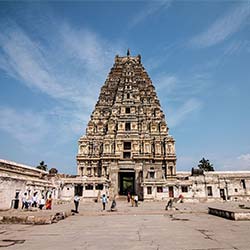
About The Bhubaneshwari Temple The Bhubaneshwari Temple, located in Jamshedpur, Jharkhand, is a popular tourist and religious destination. Dedicated to the Hindu goddess Bhubaneshwari, this temple is known for its serene environment and beautiful architecture. It attracts devotees and visitors from far and wide who come to seek blessings and admire the temple's intricate design. Architecture of Bhubaneshwari Temple The Bhubaneshwari Temple's architecture is a blend of traditional Hindu temple design and modern aesthetics. The temple features a stunning facade with intricate carvings and ornate pillars. The main sanctum sanctorum houses the idol of Goddess Bhubaneshwari, adorned with garlands and offering devotees a sense of peace and tranquility. The temple premises are well-maintained and provide a peaceful ambiance for visitors to meditate and pray. History The Bhubaneshwari Temple has a rich history dating back several decades. It was built by a group of dedicated devotees who wanted to establish a place of worship for the goddess Bhubaneshwari. Over the years, the temple has undergone renovations and expansions to accommodate the growing number of visitors. Today, it stands as a symbol of faith and devotion for the people of Jamshedpur and beyond. Best Time To Visit The best time to visit the Bhubaneshwari Temple is during the festive season, especially Navratri, when the temple is adorned with lights and decorations. The atmosphere is vibrant and festive, with special prayers and ceremonies being held to honor the goddess. However, the temple is open throughout the year for visitors to seek blessings and offer their prayers. How To Reach The Bhubaneshwari Temple is easily accessible from Jamshedpur city center. Visitors can take a taxi or a private vehicle to reach the temple, which is located on the outskirts of the city. The nearest airport is in Ranchi, about 130 kilometers away, and the nearest railway station is in Tatanagar, just a short drive from the temple. Local buses and auto-rickshaws are also available for those looking for affordable transportation options. Significance Of The Bhubaneshwari Temple The Bhubaneshwari Temple holds great significance for the devotees who come to seek the goddess's blessings. It is believed that worshipping Bhubaneshwari can bring peace, prosperity, and fulfillment in one's life. Many devotees offer prayers and perform rituals at the temple to seek protection from evil forces and to receive divine blessings. The temple also serves as a cultural and social hub, hosting various religious and community events throughout the year. Overall, the Bhubaneshwari Temple is a place of spiritual solace and divine grace for all who visit.
Explore More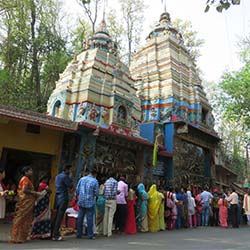
About The Rankini Mandir Temple The Rankini Mandir Temple, located in Jamshedpur, is a popular Hindu temple dedicated to Goddess Rankini. The temple is visited by thousands of devotees every year who come to seek the blessings of the goddess. The temple is known for its peaceful and serene environment, making it a perfect place for spiritual seekers to meditate and connect with their inner self. Architecture of Rankini Mandir Temple The Rankini Mandir Temple is known for its beautiful architecture and intricate carvings. The temple is built in a traditional Indian style with a high dome and sculpted pillars. The entrance of the temple is adorned with intricate designs and carvings of various deities. The inner sanctum of the temple houses the idol of Goddess Rankini, which is beautifully adorned with flowers and ornaments. History The Rankini Mandir Temple has a rich history that dates back many centuries. It is believed that the temple was built by a local king to honor Goddess Rankini and seek her blessings for the well-being of his kingdom. Over the years, the temple has undergone several renovations and additions, but its significance as a place of worship has remained unchanged. Best Time To Visit The best time to visit the Rankini Mandir Temple is during the festival of Navratri, which is celebrated with great fervor and devotion. During this time, the temple is beautifully decorated with lights and flowers, and there are special prayers and rituals performed in honor of Goddess Rankini. Devotees from all over the country come to the temple to participate in the festivities and seek blessings from the goddess. How To Reach The Rankini Mandir Temple is located in Jamshedpur, which is well-connected by road, rail, and air. The nearest airport is the Birsa Munda Airport, which is about 10 kilometers away from the temple. The temple is also easily accessible by road, with regular bus services and taxis available from the city center. For those traveling by train, the Tatanagar Junction is the nearest railway station to the temple. Significance Of The Rankini Mandir Temple The Rankini Mandir Temple holds great significance for the local community and devotees who come to seek the blessings of Goddess Rankini. It is believed that worshipping the goddess at this temple can fulfill one's wishes and bring prosperity and happiness into their lives. The temple is also a popular destination for spiritual seekers who come to meditate and seek inner peace in the tranquil surroundings of the temple. In conclusion, the Rankini Mandir Temple in Jamshedpur is a sacred place of worship that attracts devotees and spiritual seekers from far and wide. With its beautiful architecture, rich history, and peaceful environment, the temple offers a unique spiritual experience for those who visit. Whether seeking blessings from the goddess or simply looking for a place to connect with their inner selves, the Rankini Mandir Temple is a must-visit destination for anyone on a spiritual journey.
Explore More